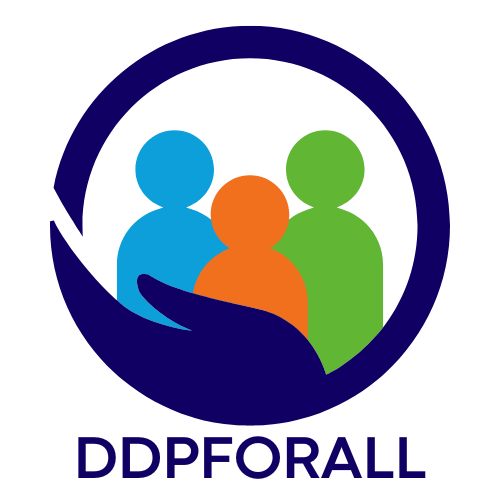Table of Contents
ToggleReading isn’t just a skill; it’s a superpower. Ever watched a child struggle with a book and thought, “If only they could unlock the secrets of reading!” Well, that’s where Ehri’s phases of reading development come in, like a trusty sidekick in a superhero movie. This framework breaks down the journey into stages, helping educators and parents guide young readers from recognizing letters to deciphering complex texts.
Overview of Ehri’s Phases of Reading Development
Ehri’s phases of reading development encompass four key stages that illustrate how children progress in their reading skills. Initial stages include Pre-Alphabetic, where young readers associate letters with sounds without forming connections among them. These readers recognize some words through memorization and visual cues.
The Partial Alphabetic phase follows, involving children beginning to understand letter-sound relationships. Readers can identify initial sounds in words, helping them decode simple text. They rely on context clues and their knowledge of familiar words to comprehend meanings.
Next is the Full Alphabetic phase, characterized by readers who can decode words more comprehensively. In this stage, children exhibit stronger phonemic awareness. They blend sounds to read unfamiliar words and develop a greater understanding of spelling patterns and word structures.
Finally, the Consolidated Alphabetic phase features proficient readers who use multi-letter patterns for word recognition. Children in this phase efficiently decode more complex texts and develop fluency. They also rely on syllables and prefixes, advancing their reading comprehension skills.
Understanding these phases allows educators and parents to tailor their support based on individual reader needs. By recognizing each child’s developmental stage, they can implement effective strategies to nourish their reading growth. Through this structured framework, readers cultivate essential skills for lifelong learning.
The Four Key Phases

Ehri’s framework comprises four essential stages that reflect a child’s progression in reading development. Each phase highlights specific skills and strategies that enhance literacy.
Pre-Alphabetic Phase
In the Pre-Alphabetic phase, young readers rely heavily on visual cues and memory. They recognize distinct words through pictures and shapes rather than decoding. Certain sight words may be memorized, enabling them to read simple texts. Visual association plays a pivotal role, where context helps them understand meaning. For instance, a child might recognize “McDonald’s” by its golden arches without knowing the letters.
Partial Alphabetic Phase
As children enter the Partial Alphabetic phase, they start grasping letter-sound relationships. Children can identify initial sounds, and they link letters to their corresponding phonemes. Their understanding of letter patterns begins to take shape, leading to simple decoding attempts. A child might read “cat” as they sound out the initial ‘c’ and match it with ‘at.’ This phase lays the groundwork for further alphabetic understanding.
Full Alphabetic Phase
During the Full Alphabetic phase, readers develop stronger phonemic awareness. They master the ability to decode unfamiliar words by sounding out letters. Enhanced skills in recognizing letter combinations enable smoother reading. Children can apply their knowledge of spelling patterns to new words, fostering confidence in their reading abilities. For example, they might read “smile” by identifying ‘s-m-i-l-e’ through blending sounds together.
Consolidated Alphabetic Phase
The Consolidated Alphabetic phase marks a significant transition in reading proficiency. In this stage, proficient readers utilize multi-letter patterns to recognize words quickly. They begin to see phrases as units rather than isolated letters, promoting fluency. By this phase, they engage with complex texts more effectively and effortlessly. Recognition of common suffixes and prefixes becomes second nature, enhancing vocabulary and overall comprehension.
Importance of Each Phase
Ehri’s phases of reading development highlight critical aspects that contribute to effective reading. Each phase plays a vital role in nurturing a child’s reading ability.
Phonemic Awareness
Phonemic awareness forms the foundation for successful reading. This skill involves recognizing and manipulating the individual sounds in words. Young readers in the Full Alphabetic phase demonstrate awareness of these sounds, paving the way for decoding strategies. These readers can blend, segment, and isolate phonemes. Mastery of phonemic awareness leads to improved decoding skills. As children advance, they gain confidence in tackling new vocabulary. Educators can foster this development through targeted activities, such as rhyming games and sound manipulation exercises.
Vocabulary Development
Vocabulary development significantly impacts overall reading comprehension. In the Consolidated Alphabetic phase, readers recognize multi-letter patterns, enhancing their ability to learn new words. Exposure to diverse texts contributes to vocabulary growth, allowing children to encounter varied contexts. Strong vocabulary supports fluent reading and comprehension. Educators should incorporate rich language experiences through reading aloud and interactive discussions. Engaging with words through multiple mediums, including visuals and auditory tools, reinforces understanding and retention.
Reading Fluency
Reading fluency represents the final piece of the reading puzzle. Proficient readers display speed, accuracy, and expression while reading. In the Consolidated Alphabetic phase, fluency research suggests children transition from word-by-word reading to smooth, connected reading of phrases and sentences. This smoothness enhances comprehension and engagement. Regular practice, such as repeated reading and guided oral reading, helps develop fluency. Incorporating various reading formats promotes enjoyment and motivation, essential factors in fostering lifelong reading habits.
Applications in Education
Understanding Ehri’s phases of reading development enhances educational practice. Educators can adopt targeted strategies that align with these stages.
Instructional Strategies
Teachers can encourage phonemic awareness by using games that emphasize sound manipulation. Activities like rhyming games or sound matching facilitate early-stage learners in the Pre-Alphabetic and Partial Alphabetic phases. Gradually incorporating decoding exercises helps students in the Full Alphabetic phase recognize letter-sound relationships through blending. Additionally, using multi-letter patterns and sight words aids students making transitions into the Consolidated Alphabetic phase. Regular exposure to rich vocabulary through diverse texts cultivates comprehension skills. Engaging them in shared reading experiences motivates and fosters a love for reading.
Assessment Techniques
Assessments designed to identify a student’s phase can guide instructional decisions. Using simple sight word tests allows educators to gauge progress in the Pre-Alphabetic phase. Phonological awareness assessments measure letter-sound connection understanding in the Partial Alphabetic phase. Progress monitoring assessments can evaluate decoding and comprehension skills as learners advance to the Full and Consolidated Alphabetic phases. Tracking growth through formative assessments, such as running records and oral reading fluency checks, provides insights into each child’s development. Data from these assessments enables tailored interventions that support individual reading journeys effectively.
Ehri’s phases of reading development provide a comprehensive roadmap for nurturing young readers. By understanding each stage from Pre-Alphabetic to Consolidated Alphabetic, educators and parents can effectively support children’s growth and build essential reading skills. Tailoring instruction to meet individual needs ensures that every child can progress confidently through these phases.
Implementing targeted strategies and assessments empowers teachers to create engaging learning environments. As children develop their reading abilities, they not only enhance their academic performance but also foster a lifelong love for literature. Embracing this framework can transform the reading journey into an exciting adventure, unlocking the superpower of literacy for every child.







